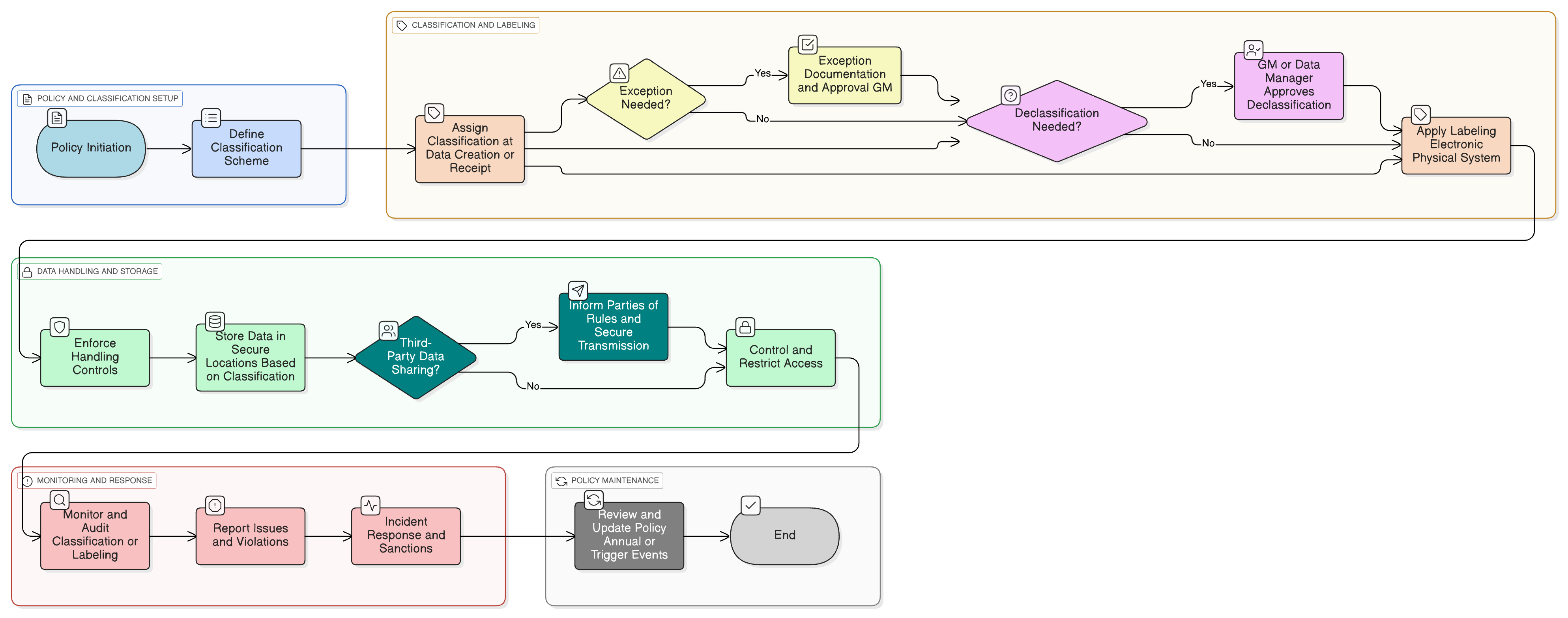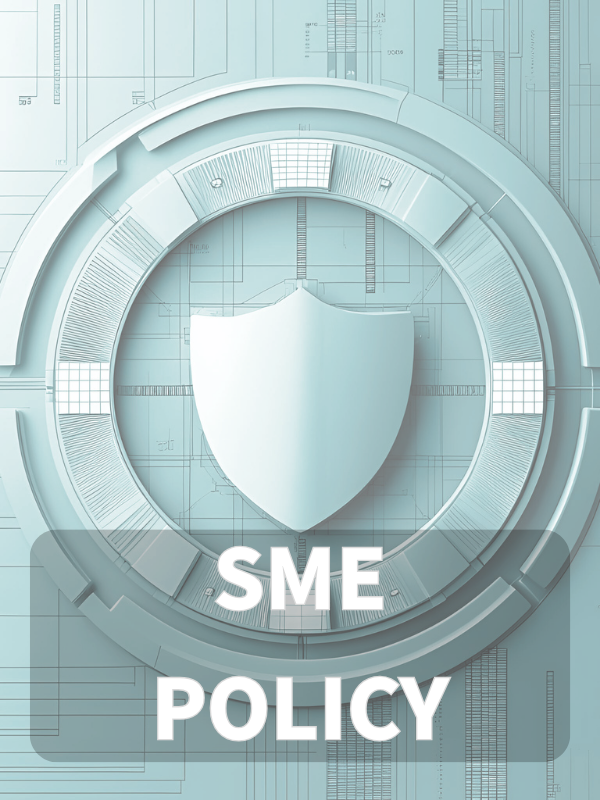Overview
This SME-friendly Data Classification and Labeling Policy establishes clear roles, a simple three-tier scheme, and enforceable rules for assigning, labeling, and protecting organizational data throughout its lifecycle, ensuring compliance with ISO 27001, GDPR, NIS2, and related regulations.
Protect Sensitive Data
Reduce the risk of accidental disclosure and unauthorized access with clear classification and handling procedures.
SME-Ready Compliance
Designed for SMEs, this policy adapts robust standards with simplified roles and responsibilities, no need for dedicated IT teams.
Lifecycle Coverage
Applies classification and labeling from data creation through storage, access, transfer, archiving, and deletion.
Clear Roles Assigned
Defines responsibilities for General Manager, Data Owner, IT Lead, and all staff to ensure policy enforcement.
Read Full Overview
Policy Diagram

Click diagram to view full size
What's Inside
Scope and Rules of Engagement
Simple Three-Tier Classification Scheme
Labeling Practices and Enforcement
Handling and Access Control by Data Level
Third-Party and Remote Access Requirements
Review, Exception, and Audit Procedures
Framework Compliance
🛡️ Supported Standards & Frameworks
This product is aligned with the following compliance frameworks, with detailed clause and control mappings.
Related Policies
Governance Roles And Responsibilities Policy-SME
Assigns accountability for policy ownership and enforcement.
Access Control Policy-SME
Aligns system access with data classification levels.
Asset Management Policy-SME
Tracks the physical and digital assets that store classified data.
Data Protection And Privacy Policy-SME
Governs protection of personal data, much of which is classified as Confidential.
Incident Response Policy-SME
Defines escalation paths and response procedures in case of classification violations or data exposure.
About Clarysec Policies - Data Classification and Labeling Policy - SME
Generic security policies are often built for large corporations, leaving small businesses struggling to apply complex rules and undefined roles. This policy is different. Our SME policies are designed from the ground up for practical implementation in organizations without dedicated security teams. We assign responsibilities to the roles you actually have, like the General Manager and your IT Provider, not an army of specialists you don't. Every requirement is broken down into a uniquely numbered clause (e.g., 5.2.1, 5.2.2). This turns the policy into a clear, step-by-step checklist, making it easy to implement, audit, and customize without rewriting entire sections.
Simple Three-Tier Classification
Applies a Public/Internal/Confidential model that's easy for small teams to understand and consistently implement.
Integrated Into Workflows
Classification and labeling are built into existing business processes like onboarding, project launch, and system setup.
Automated Enforcement and Review
Technical controls and periodic audits help enforce rules and keep protection measures current as business needs change.
Frequently Asked Questions
Built for Leaders, By Leaders
This policy was authored by a security leader with 25+ years of experience deploying and auditing ISMS frameworks for global enterprises. It's designed not just to be a document, but a defensible framework that stands up to auditor scrutiny.
